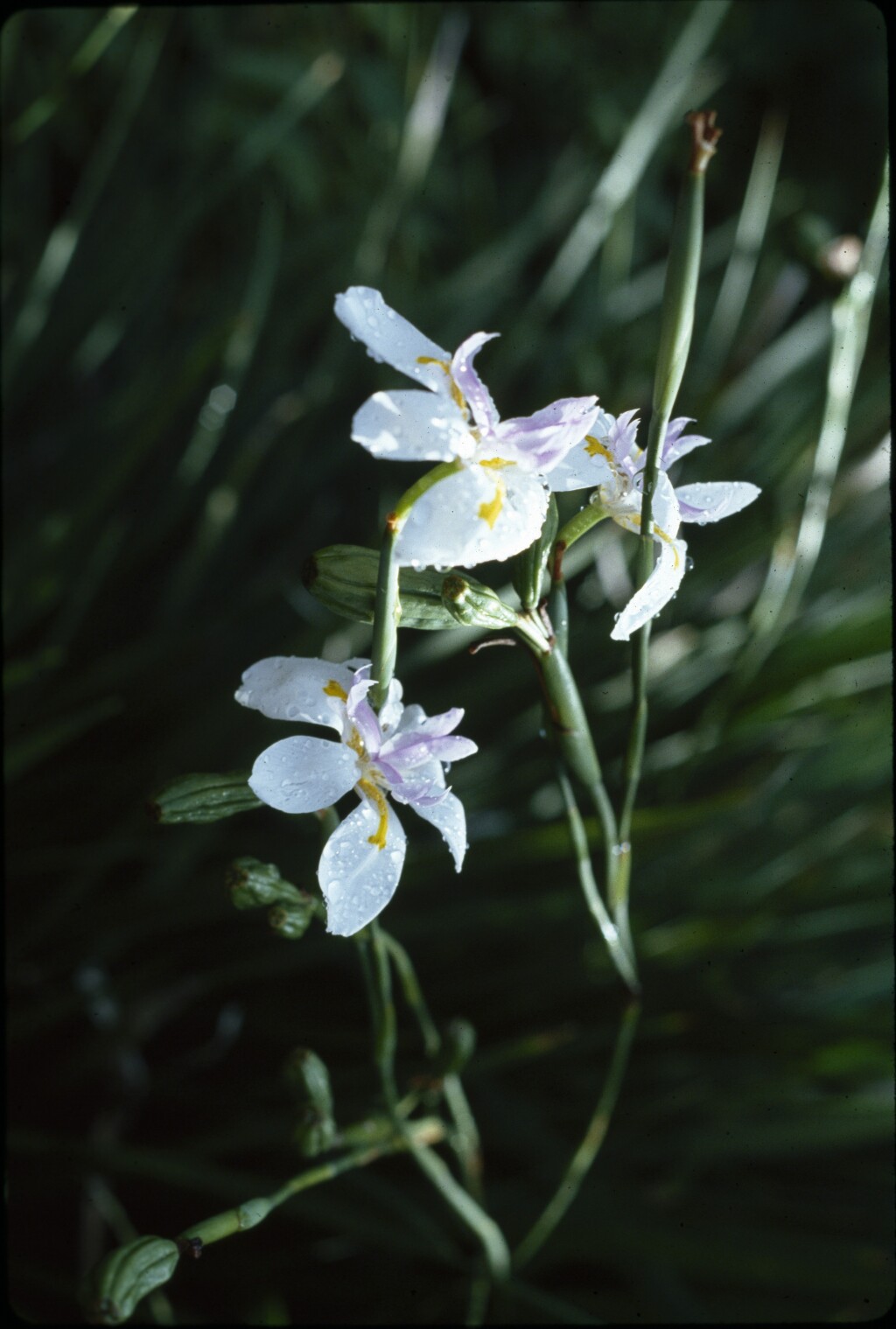Dietes iridioides
(L.) Sweet ex KlattHerbs 30–60 cm high. Leaves 25–60 cm long, 5–25 mm wide. Inflorescence irregularly branching; stem bracts 25–30 mm long. Primary bracts 35–55 mm long. Flowers white or cream with prominent yellow marking and smaller orange to brown markings basally on the outer tepals. Tepals elliptic to spathulate, spreading to recurved; outer tepals 24–35 mm long, bearded on midvein. Staminal filaments free or united basally. Ovary 8–15 mm long; style branches 7–9 mm long, blue, crests c. 5 mm long. Capsule ovoid-cylindric, 35–45 mm long, 12–15 mm wide, usually shortly rostrate. Seeds in 2 rows of each capsule chamber, more or less triangular, c. 4 mm long, 2–3 mm thick, brown, 50–100 per capsule. Flowers Oct.–Feb.
VVP, GipP, HSF, Strz. Widely grown as an ornamental, sometimes escaping from old gardens. Noted as spontaneous in near-coastal woodland near Merricks on the Mornington Peninsula.
Dietes iridioides is capable of reproduce asexually via stolons produced in old inflorescences that bear leaves and eventually root.
 Spinning
Spinning


